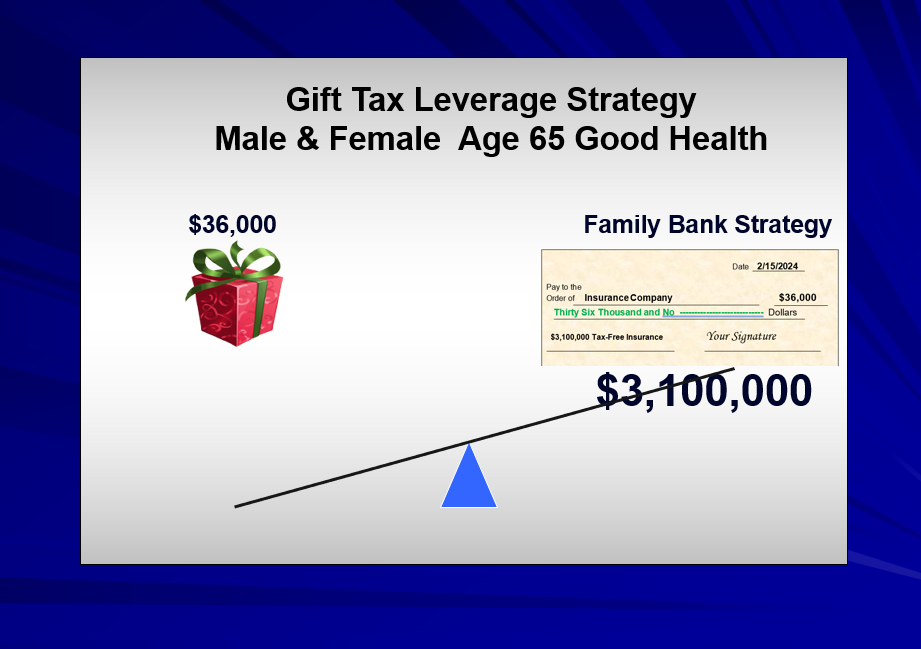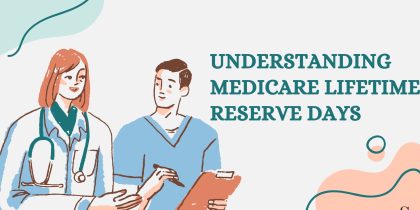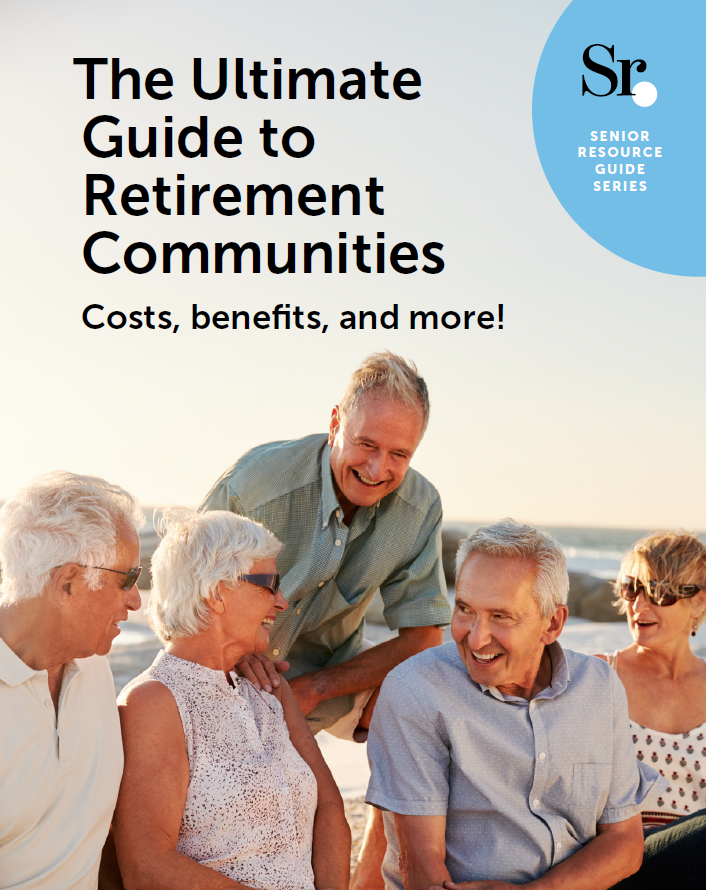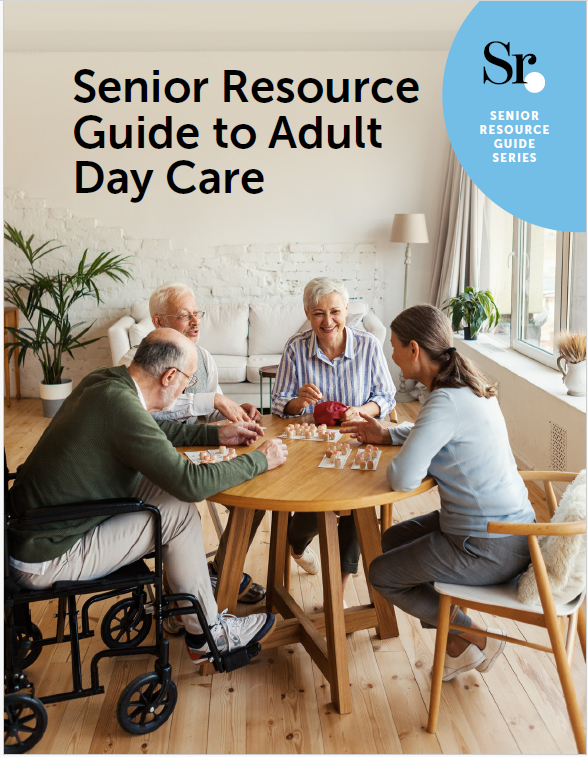Don’t Get Hit with Medicare Surprises! What High-Income Enrollees NEED to Know about Part D!

Dear Toni,
I’m turning 65 in June, self-employed, and my and my wife’s combined income is over $300,000. Recently, Social Security sent me a letter stating that my monthly Medicare Part B premium of $174.700 will double to $349.40 per month due to 2022 reported income. That was no surprise, but Social Security also said that the monthly adjustment for prescription drug coverage would be an additional $33.30 a month. What’s that about?
For context, I’m in excellent health and take NO prescriptions. If I didn’t apply for a Medicare prescription drug plan, do I still have to pay the “extra” $33.30?
Does applying for a Medicare Advantage plan including Part D, instead of Original Medicare and a Medicare supplement, help me to avoid the additional $174.70 per month for Part B and the $33.30 per month extra premium for the Medicare Part D prescription drug plan?
Thanks,
Mike from Houston, TX
Mike,
I’m so sorry to say this, but you can’t avoid the additional IRMAA (Income Related Monthly Adjusted Amount) premiums if your income is above a certain limit no matter. This stands whether you choose to enroll in Original Medicare and a Medicare Supplement with a stand-alone Medicare Prescription drug plan (Part D), or a Medicare Advantage plan (Part C) with a prescription drug plan.
Enrolling in a Medicare Advantage plan instead of Original Medicare with a Medicare Supplement and a Medicare Part D plan does NOT keep Medicare or Social Security from charging the additional IRMAA premium for both Medicare Parts B and D.
IRMAA Rules

The IRMAA rule for Medicare Part D’s additional IRMAA premium went into effect on January 1, 2011. New Medicare Part B and D premiums for all income levels are released every fall. Social Security bases your rates on both your and your spouse’s income (whether they’re Medicare age or not). The income levels are based on individual or joint tax return yearly filings. The MAGI (Modified Adjusted Gross Income) amount reported on your yearly income taxes is what triggers the IRMAA increase.
As you stated, Mike, your joint income is over $300,000. Therefore, your Medicare prescription drug plan, from either a Medicare Advantage with a Prescription Drug Plan or a stand-alone Medicare Prescription Drug plan, will include the additional $33.30 IRMAA premium for Medicare Part D.
Although you aren’t taking prescriptions, it’s not wise to decline enrolling in a Medicare Part D plan at the time you enroll in Medicare. Unfortunately, you’ll receive a Medicare Part D penalty when you enroll in Part D at a later date.
The Late Enrollment Period Penalty

The LEP (Late Enrollment Period) penalty for Medicare Part D can be charged to you because:
1. You waited 63 days without creditable prescription drug coverage upon leaving company benefits and are older than 65 years and 90 days.
Readers: Do NOT wait past 63 days to get Medicare Part D upon leaving company health insurance!
2. Your company’s prescription drug benefits (not health insurance) were not “creditable” as Medicare declares.
Click HERE to find out more about “creditable” prescription drugs.
3. You never enrolled in Medicare Part D at the time you enrolled in Medicare Part A and Part B when you turned 65, and now want to enroll.
Samuel, you were denied Medicare Part D prescription coverage because you met Medicare’s LEP (late enrollment penalty) rule. Unfortunately, you will receive the Part D penalty when you enroll during Medicare’s Annual Enrollment period. This penalty will last a lifetime.
Americans who plan to retire after 65, who are leaving their employer’s health plans and applying for Medicare Parts A and B, must also prove they have “creditable coverage” when applying for a Medicare Part D prescription drug plan. This is a Medicare rule. Don’t delay your Part D enrollment!
NOTE: This penalty lasts for as long as you are on Medicare!
Mike, since you’re turning 65 and self-employed, I’d advise you to enroll in both Medicare Part B and a Part D prescription drug plan during your Medicare Initial Enrollment Period (IEP). This may include Original Medicare with a Medicare supplement and a stand-alone Part D plan OR a Medicare Advantage. This will help you avoid the DREADED Medicare B and Part D penalties. Medicare’s IEP is the 3 months before turning 65, the month you turn 65, and 3 months after.
More Medicare Resources

Learn how to navigate Medicare with expert articles, advice, podcasts, and other senior resources, HERE!
Ron Howard on ‘The Andy Griffith Show’: ”For Andy, the show was never the same after…”
“Friendship is the hardest thing in the world to explain. It’s not something you learn in school. But if you haven’t learned the meaning of friendship, you really haven’t learned anything,” heavyweight boxer Muhammed Ali once stated.
Andy Griffith and Don Knotts’ friendship may have been difficult to explain, but it always came easily to them. In his book Andy and Don, The Making of a Friendship and a Classic American TV Show, author Daniel de Visé writes that Griffith and Knotts were “drawn to each other instantly.” The two actors had similar upbringings: difficult childhoods in sleepy Southern towns too small for their big-time aspirations. They knew how to make each other laugh and brought out the best in each other. “The five years we worked together were the best five years of my life,” Griffith once stated in an interview in 2000.
It should come as no surprise that Griffith didn’t handle Knotts’ departure from the show all that well.
“An inevitable graduation…”

Ron Howard, former child star-turned-acclaimed director, explained the effect that Knotts’ absence had on Griffith in further detail. “It was just a decision that [Don] had to make and that Andy understood. It always kind of felt more like an inevitable graduation than any kind of abandonment and betrayal.”
While Griffith didn’t begrudge his friend for leaving the show, Howard points out the noticeable shift after he left the series. “I think, for Andy, the show was never the same after Don left,” he said. “He didn’t have that partner.”
Some viewers note that Griffith’s character seems grumpier in the later seasons of the show. Gone is the placid sheriff who views the antics of his fellow Mayberrians with twinkly-eyed amusement. In his place is a grizzled lawman with a nearly perpetual frown and a hair-trigger temper. He shows his annoyance easily and more often. One has to wonder if Knotts’ absence had something to do with his metamorphosis.
Knotts returned to The Andy Griffith Show for a few guest appearances. Andy’s joy at working with his longtime friend again is almost palpable. “The absolute foundation of the show, and why it endures, is Andy-Barney,” Howard stated. “And yes, the feeling of what Mayberry was. But without the comedy that they generated, I don’t think the show ever would have endured.”
We couldn’t agree with him more!
9 Budget-Friendly Vacation Spots for Thrifty Seniors in 2024

Summer is approaching rapidly, and many folks have a vacation on their mind! While most of us are ready to pack our bags and head for our favorite vacation destinations, a couple of barriers might be standing in the way of us and the trip of a lifetime. For some, it’s family or health issues. For others, it’s money. Unfortunately, vacation isn’t free and can sometimes be costly. So, does that mean vacation is an unattainable dream for the average person? Of course not! You can still enjoy a nice trip to a beautiful location without breaking the bank. You’ll want to stick around for this article if that piques your interest. Here are 9 budget-friendly vacation spots for thrifty seniors in 2024!
Beaufort, South Carolina

“Born homeless, I’ve tried to make Beaufort, South Carolina my home. To me, these islands didn’t exist until I found them. I invented the marshes, the oyster banks, and the ink-dark creeks . . . “ These words, written by The Great Santini author Pat Conroy, capture the beauty and low-country majesty of beautiful Beaufort. Christened the “Queen of the Carolina Sea Islands”, this historical city is picturesque and affordable.
Why you’ll love it: Rich in history and stunning views, Beaufort has a little something for everyone! The historic Point Neighborhood is filled with historic, well-preserved homes and one that made history for another reason. It was used in the movie The Prince of Tides, starring Barbara Streisand. For nature lovers, there’s Hunting Island State Park and Lighthouse, an incredible 5,000-acre state park. If you’re a literary buff, you won’t want to miss out on a visit to the Pat Conroy Literary Center.
Where to stay: The Quality Inn At Town Center costs just $76 per night, which includes breakfast. While a slightly more expensive option, The Beaufort Inn boasts a convenient location near Henry C. Chambers Waterfront Park and Beaufort Park. Plus, it’s pet-friendly!
Budget tips: According to Budget Your Trip, a one-week trip to Beaufort usually costs around $919 for one person and $1,838 for two people. Many activities in Beaufort are FREE, such as the Hunting Island Nature Center and the Old Sheldon Church Ruins. Try to do as many free activities as possible to save some money.
Tucson, Arizona

Home to Arizona University and the heart of the Sonora Desert, Tuscon is the perfect destination for budget-friendly seniors and their families. No matter what time of the year you plan your visit, you’ll always have a plethora of things to do. March is the season for the Tucson Festival of Books, one of the world’s largest book fairs. November kicks off the annual All Souls’ Procession, an event that incorporates Mesoamerican, Spanish Roman Catholic, and Mexican rituals and traditions to honor the dead.
Why you’ll love it: Tuscon is the perfect blend of metropolitan charm and rugged desert views. The Arizona-Sonora Desert Museum is often named one of the best things to do. It’s more of a zoo than a museum, housing a botanical garden, animal exhibits, and an aquarium. However, if indoor activities are more your style, you can visit the Pima Air & Space Museum. Of course, Old Tuscon is also a fun option, especially for anyone intrigued by the Old West!
Where to stay: The El Presidio Bed & Breakfast Inn is an excellent, convenient option that also happens to be affordable! Of course, if B&Bs aren’t your thing, you can always give the Ramada by Wyndham Viscount Suites Tucson East a try. It’s also on the affordable side at $89 per night and boasts both a pool and a hot tub.
Budget tips: Like Beaufort, Tuscon offers plenty of free activities! For example, you can check out the San Xavier Mission at ZERO cost! The Southern Arizona Transportation Museum, which is perfect for anyone with an interest in trains, is also free. Additionally, the Greyhound Bus offers budget-friendly transportation options.
Indianapolis, Indiana

Is Indianapolis the hidden gem of the Midwest? We’ll let you decide! Known as the “Racing Capital of the World”, this capital city is the best thing since sliced bread. No, really—Wonder Bread was invented by Indianapolis’ very own Taggart Baking Company in 1921!
Why you’ll love it: The Children’s Museum is fun and interactive, perfect for both the young and the young at heart. Of course, animal lovers have to visit the Indianapolis Zoo. Foodies will also love Indianapolis’ culinary culture. You can enjoy a wide array of dining options, from food trucks to fine dining. It was named one of America’s hottest foodie cities for a reason!
Where to stay: The My Place Hotel is a great, pet-friendly option. If you’re looking for something a little different but still within your budget, you might want to give La Quinta Inn & Suites by Wyndham Indianapolis Airport West a try. Both breakfast and parking are included!
Budget tips: Calling all car buffs! The Stutz Car Museum is the perfect, inexpensive place for you to check out. Or you can visit the Crown Hill Cemetery, which is the third-largest cemetery in the United States. The city itself offers murals and art that are completely free to the viewing public, as well!
Holland, Michigan

If you’ve ever dreamed of visiting Holland but it’s a little outside of your budget, consider compromising with a trip to Holland, Michigan. Sure, it’s not as exotic, but it’s every bit as beautiful. It, too, is awash in tulips, scenic views, and enough European inspiration to make you feel like you’ve taken a trip overseas.
Why you’ll love it: Tulips! Lake Michigan! Windmills! This truly feels like a slice of the Netherlands right within a pocket of America. From the Holland State Park to the oft-photographed Big Red Lighthouse (pictured above), there’s no shortage of things to see and do. Visit in May, and you’ll get the chance to participate in the Tulip Time Festival, an event that draws upon the city’s Dutch heritage.
Where to stay: If you’ve never seen a Holiday Inn that has the feel of a rambling Victorian farmhouse, then allow us to introduce you to Holland’s Holiday Inn. It’s beautiful and fairly cheap with a fitness center. Oh, and it’s FREE for kids to stay there!
Budget tips: Check out the Holland Farmer Market or the De Graaf Nature Center! Of course, if you plan your visit in May, you can also enjoy the Tulip Time Festival and take in some truly spectacular views at zero cost.
Lancaster, Pennsylvania

Two words: Amish Country. Lancaster is an eclectic blend of Amish people, pop culture iconography, and historical attractions. The tenth-most-populous city in the state of Pennsylvania is the perfect place for any traveler. Whether you prefer more pastoral landscapes or urbane views, you’ll be able to find both in Lancaster.
Why you’ll love it: Lancaster’s biggest tourist draw might be Amish Country and its plethora of farms and beautiful, unblemished countryside. However, if you’re more of an adrenaline junkie, you can always check out the Dutch Wonderland Family Amusement Park. The Boulders Miniature Golf Course also offers fun for visitors of all ages. The city boasts plenty of historical tours that will appeal to any history buff.
Where to stay: Have you ever wanted to stay in a steamboat-turned-hotel located conveniently close to downtown Lancaster? Then look no further than the Fulton Steamboat Inn! Not only is it unique, but it’s also fairly affordable at around $105 per night!
Budget tips: It doesn’t cost a dime to pet miniature horses at The Li’l Country Store and Miniature Horse Farm. Gardens at Conestoga House is free on the last Wednesday of the month. The Green Dragon Farmers Market & Auction is also free to browse. Though, of course, you might buy some wares while you’re there!
Riviera Maya, Mexico

If you have your passport and an itch to travel out of the country, then Riviera Maya, Mexico might be the perfect destination for you! It’s a tourist’s dream, boasting everything from all-inclusive resorts to pristine beaches to Mayan ruins.
Why you’ll love it: Picture a place that has both Indiana Jones-esque archeological sites and sprawling water and theme pictures. That’s Riviera Maya in a nutshell. If you’re up for a little adventure, you can always try diving in an underground cave. Of course, the beaches are beautiful, with white sand and crystal-clear water!
Where to stay: The Barceló Maya Tropical is all-inclusive, which means that you get to enjoy free food, drinks, and complimentary shuttle services. Amenities include a spa, fitness room, tennis court, and a water park.
Budget tips: If you want to get the most bang for your buck, plan your trip for the off-season! You can get better rates, and you won’t have to deal with as many crowds. It’s a win-win!
Golden, Colorado

If you want a big city feel without all the big city crowds and pollution, then add Golden, Colorado to your travel list. It’s close enough to Denver that you can still experience everything in Colorado’s most populous city but also offers enough entertainment and tourist attractions to keep you entertained!
Why you’ll love it: Golden is an ideal vacation spot for outdoor enthusiasts. Its mixture of hiking trails, fishing spots, and museums means there’s something for everyone. The Buffalo Bill Museum and Grave will appeal to any Old West fans while the shopping district offers more modern conveniences. The Lakeside Amusement Park is also a must-visit sort of destination for the entire family!
Where to stay: La Quinta Inn by Wyndham is a cheaper option that also has a pool and complimentary breakfast. While slightly more expensive than the previous option, Aiden by Best Western Denver West/Golden comes with high reviews and a hot tub.
Budget tips: Visit the Mines Museum for an enthralling and FREE experience. Or you can take in some artwork at the Foothills Art Center!
Old Orchard Beach, Maine

This beach town has a little of everything, including historical attractions, amusement parks, and golf courses. Of course, the biggest draw is probably Old Orchard Beach, with its beautiful sandy shoreline and seaside resort.
Why you’ll love it: If you love the beach and New England, then you can have the best of both worlds in Old Orchard Beach. It’s filled to the brim with specialty shops, local restaurants, and food stands. Additionally, it boasts a quirky pier, packed with all the amenities that make piers such a tourist draw. Those who enjoy live music and entertainment will want to mosey down to The Seaside Pavilion while they’re in town.
Where to stay: The Alouette Beach Resort is the perfect seaside resort. While it’ll run you around $129 a night, it boasts both indoor and outdoor pools, excellent dining options, and some truly spectacular beachfront views.
Budget tips: Take advantage of the beach and pier while you’re there! Both are FREE. Well, unless you pick up some souvenirs or candy at one of the pier shops, of course!
Myrtle Beach, South Carolina

Myrtle Beach is one of the most popular vacation destinations in the United States and for several good reasons. One, it boasts some beautiful truly beautiful beaches. Two, it’s known as one of the most affordable vacation spots on the entire eastern seaboard. Three, it’s an excellent place for any golfing enthusiast to spend a week or two. What more could one want?
Why you’ll love it: Be sure to check out Ripley’s Aquarium of Myrtle Beach, where you can dine with a mermaid and meet some penguins. Broadway at the Beach is an ideal place to pick up souvenirs. Of course, there are more than enough amusement and water parks to keep the whole family entertained!
Where to stay: Myrtle Beach boasts a lot of affordable options, including the Sandbar Hotel and the Homewood Suites by Hilton.
Budget tips: You can explore Myrtle Beach State Park and Huntington Beach State Park and all they have to offer for just $8 or less per person. Murrells Inlet MarshWalk is a great place to take a stroll or admire the beautiful scenery. The Market Common is also free to explore, though you might want to pick up something at one of its many shops and boutiques!
Where To Find Continuing Education Opportunities for Seniors

Learning is a lifelong adventure, a truth that resonates through every stage of life. Statistics suggest that older adults, even after retirement, show a significant level of interest in continued education. This may be spurred by a desire for personal enrichment, the pursuit of knowledge, or sometimes just the joy of staying mentally active. If you’re a senior looking to expand your horizons through education, you’re in the right place. Let’s talk about how to find continuing education opportunities near you!
What is Senior Adult Education?
Senior adult education is about more than just gaining knowledge; it’s a tool for social engagement, personal development, and cognitive enrichment. These educational offerings can span from formal degree programs or non-credit classes at universities and colleges to non-traditional educational programs like online courses, seminars, and workshops.
Why Choose Continuing Education as an Older Adult?

The benefits of continued education for seniors are both numerous and well-documented! Such benefits include the preservation of cognitive function, keeping brains engaged and active, and staving off memory-related conditions. Education also enhances social well-being by creating a platform for interaction and community building with peers who share similar interests. What’s more, learning can be a source of personal gratification, providing a sense of accomplishment and purpose.
The Most Common Places to Find Continuing Education Opportunities

Community Colleges and Universities
Local community colleges and universities often offer a wide range of courses and programs specifically designed for older adults. Some institutions provide reduced tuition or senior discounts, making higher education more affordable. These classes can be tailored to your interests, from history and literature to the latest in technology and wellness. Reach out to the admissions or continuing education departments to inquire about offerings and application processes.
Adult Learning Centers
Many cities have adult learning centers that cater to the educational needs of the community. These centers offer day and evening classes, ranging from academic subjects to leisure activities. Check with your local center for senior-specific programs and any associated costs or discounts.
Local Libraries and Community Centers
Your neighborhood library or community center can be a treasure trove of learning opportunities. These venues often host free seminars, book clubs, and discussion groups, some of which are tailored to seniors. Visit their websites or talk to staff to stay updated on their event calendars.
Online Learning Platforms
In the digital age, online learning platforms like Coursera, Udemy, and Khan Academy have revolutionized access to education. Many of these platforms offer massive open online courses (MOOCs) that are open to everyone, often at little to no cost. Platforms may have specific sections or discounts for senior learners, so it’s always worth exploring these options!
Senior Centers and Organizations
Senior centers are dedicated to meeting the needs of older adults, and education is often a key part of their mission. These centers offer a variety of activities, including classes that foster intellectual stimulation and social interaction. Membership fees and program costs vary, so inquire directly to find what appeals to you.
How Much Senior Adult Education Usually Costs

The cost of senior adult education varies widely depending on the institution, program, and geographic location. Local community centers and libraries might offer free or low-cost options, while universities and private learning centers may charge more. Keep in mind that some places provide senior discounts or scholarships for older learners.
Don’t forget to budget for books, supplies, and any additional fees that may be associated with your chosen courses or programs. Financial aid or grants may also be available, particularly for degree-seeking seniors – so it’s worth exploring these options as well!
Where to Find Free Senior Adult Education

Free education for seniors is available in various forms. Here are some of the most common places to look for complimentary educational opportunities:
Local Community and Religious Organizations
Community and religious organizations often host workshops and discussions on a range of topics. These events are usually free of charge and provide a wealth of information. Keeping an eye on local bulletin boards or event listings can help you find these opportunities.
Libraries and Museums
Public libraries and museums frequently offer free lectures, exhibitions, and educational programs. These institutions are valuable resources for continuous learning, and many organize events specifically for seniors. Be sure to check their event calendars for upcoming activities.
Online Platforms
Some online learning platforms specifically cater to seniors and offer free courses. The advantage of online learning is that it can be done from the comfort of your home, eliminating the need for travel or additional expenses. Look out for platforms that offer special programs for older adults.
Where to Find Senior Adult Education

When beginning your search for senior adult education opportunities, resources like SeniorResource.com can be invaluable! These websites compile and categorize a wide array of educational options, making it easier to find programs that match your interests and location. They often include links to online courses, local community classes, and senior-specific learning opportunities.
SeniorResource.com provides a user-friendly interface that allows you to search for educational programs by location. The site also features articles and resources that can guide you in your quest for senior adult education.
Other potential sources include local newspapers’ community events sections, social media community groups, and notice boards at local senior centers.
It’s all about staying informed and being proactive in your educational pursuits!
Steps for Finding Continuing Education Opportunities

Step 1: Identify Your Interests and Goals
Begin by identifying what you’re passionate about and what you aim to achieve through education. Whether you want to learn a new skill, understand a different culture, or simply enjoy literature, setting clear goals will focus your search efforts.
Step 2: Research Local Institutions
Use online tools and directories to research the educational offerings of local colleges, universities, and community centers. Look for senior-specific programs and assess the logistics, such as class times, transportation options, and any associated costs.
Step 3: Stay Updated with Local Events
Frequently check the websites and bulletins of local libraries, museums, and community centers for upcoming events. Subscribe to mailing lists and follow social media pages to receive regular updates on educational opportunities for seniors.
Step 4: Explore Online Learning
Take advantage of the Internet to explore online courses and programs. Visit reputable platforms and sign up for courses that align with your interests. Don’t hesitate to contact customer service to inquire about any available senior discounts or financial aid.
Step 5: Engage with Senior Communities
Connect with other seniors in your community to learn about educational opportunities they’ve discovered. Join discussion groups, attend local meetups, and become an active participant in senior organizations.
Step 6: Utilize Dedicated Websites
Regularly visit websites like SeniorResource.com that focus on educational opportunities and other resources for seniors. These platforms can save you time and effort by presenting a curated list of available programs.
Step 7: Consider Volunteering or Part-Time Work
Some volunteer positions or part-time jobs come with educational benefits, such as discounted or free access to courses. Explore opportunities that could provide not only additional learning but also a way to give back or earn extra income.
Step 8: Keep an Open Mind
Be open to trying new things and stepping out of your comfort zone. Lifelong learning is about exploration and growth, and you may discover interests and talents you never knew you had.
29 Signs You Might Be Pushing Away Your Adult Children

Raising kids is not for the faint of heart. When they are young, you do your best to love them, protect them, and keep them out of trouble. In the blink of an eye, they have grown and are living their own lives. Sometimes they make choices you don’t agree with or do other things that make us shake our heads. You do your best, but sometimes it’s hard. Still, what do you do when your adult children start to withdraw from you? Are you wondering why the dynamic relationship has changed? You may be pushing them away without even realizing it. Here are some things that you may be doing that affect children negatively.
1. You don’t initiate frequently

They don’t call you very often, if at all. You go weeks if not months in between phone calls and when you do call; they don’t pick up.
2. Elusive plans
It’s hard to make plans to do things with them. They are noncommittal or act like they don’t want to see you, however; they are usually quick to make plans with friends and other family members.
3. Keeping their lives to themselves

They are very vague when you ask them how they are or how things are going. You know hardly anything about their life because they don’t share anything with you.
4. Defensiveness
You get defensive when they ask you a question or make a comment about your life.
5. Reciprocity

Even though your kids do things for you, you never reciprocate or help them out.
6. Negative labels
They refer to you as “the saint” or “the martyr” or some other negative label that describes your behavior.
7. They can’t make their own mistakes

Instead of letting them make their own mistakes, you overprotect them, which robs them of the experience of learning valuable lessons. You have a hard time stepping back and letting them make their own mistakes, which is detrimental.
8. Unwanted comparison
You are always comparing them to someone else. You find yourself saying things like, why can’t you be like your cousin? She is a top lawyer in her firm and makes a very good living. Why can’t you be like your brother and run a successful business? This only breeds resentment.
9. You are too quick to criticize

Always criticizing their choices or making harsh judgments about them. This will only make your child shut down, no matter what age.
10. Choosing to focus on achievements over character
Instead of focusing on them as a person and their character, you pressure them about their grades, when they will get married, or climbing the corporate ladder. Instead, celebrate their determination to improve, even if it takes a while.
11. No respect for their privacy

You are always going through their things to find something or showing up unannounced.
12. You are rarely genuine in your words
Not saying I love you or being encouraging is damaging to your children. Let them know you are proud of their efforts.
13. You never admit when you’re wrong

When you must always be right and don’t own up to your mistakes, it can infuriate your adult children.
14. You never apologize
Everyone makes mistakes, but you never apologize for anything you say or do.
15. Dismissing their emotions

Everyone has emotions and gets upset over different things. That makes us unique. You often dismiss your child’s emotions as unimportant or silly depending on what the issue is, therefore minimizing their feelings and telling them they aren’t important.
16. Making promises you don’t keep
You make promises you don’t keep, from telling your daughter you’ll babysit over the weekend to telling your son you’ll be at his house on time for dinner. Still, you never do.
17. Living your unfulfilled dreams through them

You don’t let your children carve out their own lives. You are constantly pressuring them into the “perfect” career, therefore stifling their passions and interests. Instead of seeing them as separate individuals, you are trying to live the dreams you didn’t fulfill through them.
18. You fight with your partner
If you are constantly fighting with your spouse or partner, no one wants to be around that.
19. You fight with their partner

You don’t like the partner your child has chosen or is married to, so you are always picking a fight, criticizing, or causing some kind of family dysfunction. No one wants to be around that either.
20. Your priorities trump time together
You don’t prioritize them in your life. Instead of spending time with your children, you are spending time on your golf game with the guys or out on a shopping spree with the ladies. This can also include working excessive hours.
21. You’re more interested in technology than spending time

Instead of spending time “in the moment,” you are busy scrolling your phone, checking your email, or texting friends.
22. Using guilt or bribing to get them to behave how you want
Since you are not happy with your children, you guilt trip them or bribe them into acting the way you want and doing the things you want them to do.
23. You don’t help

If your kids ask for help, you make excuses or blatantly tell them that you won’t help them.
24. You play favorites
Parents should love all their children and not play favorites. Pitting them against each other is both damaging and demoralizing.
25. Giving unwanted advice

You may have lots of life experience, but your children don’t always want your advice. Sometimes all they need is a listening ear for them to vent or a hug for reassurance.
26. Meddling
You involve yourself by voicing your opinion about your child’s partner, parenting choices, etc. when it isn’t asked for. Keep your opinions to yourself and let your child figure their life out for themselves.
27. You talk bad about your ex or current spouse

If you talk badly about your ex or spouse in front of your kids, regardless of whether you are divorced or married, it is wrong to do so. They should be allowed to form their own opinions about their ex or spouse. Let them form their own opinions about the other parent.
Read Next: 17 Resilient Ways to Thrive Through Divorce
28. Bringing up old grudges and embarrassing childhood stories
Leave the past in the past. Bringing up old grudges and making fun of your kid for things they did as a kid is hurtful. It makes them feel you will never move past it or let it go.
29. You make your love conditional

You tell your children that you’ll only love them if… This is damaging at any age. Children need to know that they have your unconditional love regardless of their choices at any age.
You Might Be Pushing Away Your Adult Children

Being a parent is hard. You try your best when they are young to help them grow into mature, functioning adults. Still, we all make mistakes. If you find yourself doing one or more of the things mentioned in this list, own it and try to change. It won’t happen overnight, but making an effort counts. Talk to your adult children and apologize for your behavior. They will appreciate your honesty. From there, strive to have an open, honest, respectful relationship with your child and work together to help you grow and improve. You will be glad you did.
9 Heart-Healthy Foods to Add to Your Plate

Whether your doctor has issued a stern warning or you want to eat healthier for personal reasons, you’re in the right place! Eating a heart-healthy diet can reduce or eliminate risk factors for heart disease. From lower blood pressure to better cholesterol, the effects of a healthy diet can’t be overstated! But what foods should be part of a heart-healthy diet? How can they improve your cardiac health? Keep reading to find out!
1. Eggs

Once upon a time, eggs were demonized in the health community. People who were following low-fat diets avoided eggs like the plague, considering them too cholesterol-packed to be part of a healthy breakfast. However, eggs don’t deserve their bad reputation! Fortunately for egg lovers everywhere, new studies suggest that consuming foods with cholesterol, like eggs, has little correlation to high cholesterol in the blood or a risk of heart disease. Furthermore, the American Heart Association has chimed in, saying that people can eat one to two eggs per day with no negative health effects. In fact, they’re excellent sources of protein!
2. Oatmeal

Oatmeal is delicious, nutritious, and versatile. It should come as a shock to no one that oats can be part of a heart-healthy diet! It’s rich in soluble fiber, including beta-glucan, which lowers blood glucose and cholesterol levels and promotes healthy gut bacteria. However, what kind of oats you eat matters. For example, flavored oatmeal tends to be higher in sugar and has less fiber than other kinds. Steel-cut oats take a little longer to cook but contain more fiber than other kinds. Meanwhile, rolled oats are easier to cook but have slightly less fiber than steel-cut. Consider adding fruit, like bananas or berries, or a handful of nuts to your oatmeal for even more nutrients. However, oatmeal in and of itself is incredibly nutritious, packed with vitamins, minerals, and enough fiber and protein to keep you satiated throughout your morning!
3. Avocados

Never underestimate the power of a good avocado! Though small, this superfood is stuffed with vitamins, minerals, and healthy fats. Additionally, they contain antioxidants that may help fight aging and certain diseases. A superfood, indeed! According to Health.com, just one avocado provides 40% of the Daily Value (DV) of folate, 30% of the DV for vitamin K, and over 20% of the daily value of vitamin C. Additionally, this green superfood can raise good cholesterol and help reduce blood pressure. In other words, they’re heart-healthy food! While you can also add avocado to whole-wheat toast or throw it into a good salad, you can also blend them up into a nice fruit smoothie! Of course, eating them alone is a good option, too.
4. Spinach

I’m Popeye the sailor man. I’m Popeye the sailor man. I’m strong to the fin-ich. ‘Cause I eats me spin-ach. I’m Popeye the sailor man. Most of us remember this song from the iconic Popeye cartoons. While spinach can grant superhuman strength, it’s still a superfood! Not only can this leafy green vegetable boost your immunity and promote more glowy skin, but it’s also fantastic for your ticker! Not to mention that it’s also stuffed with essential vitamins and minerals! If you can’t stomach the taste of spinach on its own, you can add it to a salad or toss a handful or two into a fruit smoothie. Baked spinach is also a tasty choice!
5. Olive Oil

Speaking of Popeye, let’s discuss olive oil! No, not the cartoon sailor’s fickle girlfriend but the oil that contains healthy fats that are the key for cardiovascular health. A lot of people might not think “healthy” when they think “oil”, but olive oil can protect your heart against heart disease by lowering inflammation and preventing excessive blood clotting. More importantly for seniors, it may help to fight against Alzheimer’s disease! However, it’s important to get the right kind of olive oil. Extra-virgin olive oil is considered the healthiest variant but only if it’s high-quality. Make sure you examine the labels closely and know what you’re buying before you add it to your shopping cart.
6. Berries

If berries are your favorite fruit, then I’ve got great news for you. Berries, including blueberries, strawberries, blackberries, and raspberries, contain a plethora of nutrients and antioxidants that improve your heart health. One such antioxidant, known as anthocyanin, protects against oxidative stress, which can contribute to the development of heart disease. Other health benefits include better digestion, healthier skin, and lower cholesterol. While you can enjoy berries on their own, they’re also a great addition to other meals—oatmeal, yogurt, smoothies, salads, the list goes on and on!
7. Dark Chocolate

Yep, you read that right—dark chocolate can benefit your heart. Rich in flavonoids and antioxidants, dark chocolate may improve blood flow to the heart and brain and decrease the risk of blood clots. However, not all chocolates are created equally. To truly reap the benefits of this chocolatey treat, choose a variety with a higher cocoa content. (70% or higher). Additionally, dark chocolate must be consumed in moderation (less than six servings per week). As long as you follow those guidelines, your heart may benefit tremendously!
8. Tomatoes

Tomatoes are technically a fruit, though most people consider them a vegetable. Regardless of how you categorize them, they’re packed with beta-carotene, lycopene, and vitamin C, which can reduce your risk of heart disease. And that’s not all these red fruits (vegetables?) can do for your health. They can also lower your cancer risk, support brain health, and promote exercise recovery (according to Health.com). Plus, they’re incredibly versatile! You can eat them on their own, add them to a nice salad, or even oven-roast them! Now, that leaves only one question. If tomatoes are technically a fruit, does that mean that ketchup is technically a smoothie? We’ll let you decide.
9. Almonds

Almonds are not only yummy, but they’re also an excellent source of heart-healthy monounsaturated fats and fiber, both of which can protect against heart disease. Additionally, consuming almonds regularly can help raise the good cholesterol (HDL) and lower the bad! Like all nuts, almonds are high in fat and calories, so you should consume them in moderation. However, as long as you keep track of your almond consumption, they can be a great part of a heart-healthy diet. And remember—almonds can be added to other heart-healthy foods, like spinach salads and oatmeal.
Other Ways to Keep Your Heart Healthy

While a heart-healthy diet can keep your ticker running as it should, it’s not the only way to boost your cardiac health! Here are a few other ways to keep your heart nice and healthy.
- Get active!
- Manage your stress.
- Get enough sleep.
- Quit smoking.
- Avoid alcohol or drink in moderation.
- Maintain a healthy weight.
- Stay hydrated.
- Maintain social connections and friendships.
- Get regular health check-ups and take preventative care seriously.
- Limit processed foods.
Looking for More?

If you’re looking for even more great articles like this one, then be sure to check out these before you head out!
Retire Richer With These Tax-Free Investment Secrets
Avoid Estate Planning Pitfalls (Listen or Watch Now!)
Thinking about how to protect your wealth and ensure it passes smoothly to your loved ones? This podcast episode and accompanying video, by David T. Phillips, offer a deep dive into estate planning and the tax strategies that can benefit your family.
Listen wherever you get your podcasts, or watch the video below!
Estate planning goes beyond just writing a will. It’s a crucial roadmap for safeguarding your legacy and minimizing tax burdens for your heirs. This episode tackles how to save money on taxes throughout your life and when passing on wealth to your heirs. David reveals investment strategies that can minimize your tax burden and explores concepts like the “Step-up in Basis” and Roth IRA conversions. He also dives into the “Family Bank Strategy,” which he calls the Holy Grail, for accumulating and distributing wealth tax-free.
Key Points Covered
- Estate Planning vs. Financial Planning
- Estate Planning Mistakes to Avoid
- Tax-Efficient Investment Strategies
- The Family Bank Strategy: A powerful technique that unlocks the potential for tax-free growth and inheritance for future generations!


Subscribe to and Connect with Estate Planning Made Easy

Generational Wealth Strategies Newsletter: https://shorturl.at/zHJOZ
9 Ways to Make Your Marriage Last a Lifetime

“God created marriage. No government subcommittee envisioned it. No social organization developed it. Marriage was conceived and born in the mind of God” (Max Lucado).
Marriage between a man and a woman is God’s joyful and valuable gift. The love between a man and a woman is irreplaceable and is a challenging yet wonderful gift of life on earth. Marriage may seem like a Lego project without instructions.
But, God’s plan, complete with instructions, will make marriage last a lifetime. Since it’s His idea, being bone of bone, equal before God, and each carrying unique attributes of our Creator, we are declared “one flesh” (Genesis 3:23-24).
One of the first words a toddler learns is “no.” “Mine.” Human nature tells us sex is free to share without the bonds of marriage.
Although human nature is self-centered, God’s is selfless, grace-giving, and merciful. A successful marriage calls us to emulate God’s love, and sacrifice, as Jesus did for us. God’s principles applied reap powerful rewards.
God designed Eden to be a perfect, pristine place for Adam and Eve and provided everything needed to share a lifetime together.
Adam and Eve were driven away from God’s care because of Satan’s deception and their prideful decision to ignore God’s love. As always, self-pride, thinking we are smarter than God, leads to a fall (Proverbs 16:18).
God’s established boundaries for our safety and freedom. The world says you can become your own god. You’re smart. You know what is best. Put yourself first and obtain what you desire.
But, in God’s economy, we are to serve others first and “in humility count others more significant than yourselves” (Philippians 2:3).
Throughout Scripture, the selfless way Jesus loved the Church and gave Himself for her is the prime example of marriage and an ideal to live up to. God wouldn’t have told us to aim for it if it weren’t possible.
Although “the heart is deceitfully wicked” (Jeremiah 17:9), God is the One who changes hearts and gives the strength to become what we think may seem impossible.
We can expect God’s help to lay down selfishness and pride. Selfishness and anger of quarreling lead to separations that break vows and hearts.
Growing in God’s love and grace will enhance self-control and forgiveness, the fruit of a lifelong marriage. The Holy Spirit transforms selfishness and pride into righteousness, emulating the nature of Jesus (Galatians 5:22-23). When we love Jesus more, we grow to love our spouse more.
We just celebrated our 54th year of marriage. The most significant “tool” that has shaped our lives is Scripture. Applying God’s Word strengthens our ability to serve each other as we grow in understanding and generosity of spirit.
By God’s grace, and with His principles for life and love, these few practical aspects have worked on building a lifetime marriage.

1. Go to Bed Together
In vain you rise early and stay up late, toiling for food to eat — for he grants sleep to those he loves (Psalm 127:2).
This is a crucial moment for intimacy. A wise woman gave me this advice early in marriage.
God’s gift of marriage is a sacred covenant that enjoys the deepest bonds, even when we don’t feel like it. Giving to the other, from either spouse, is an act of love.
2. Pray Together Every Night
“For where two or three have gathered in My name, I am there in their midst” (Matthew 18:20).
Prayer builds a strong bond in marriage. Praying was a significant part of life, but we didn’t pray together at bedtime until we were co-pastoring a difficult church.
Then, the bedtime praying built a new strength of encouragement, direction, and wisdom. Today, we continue our bedtime prayer together.
We name each family member, from our sons to our great-grandson. We also include friends, churches, missionaries, and more.
3. Do What God Says to Do
Love is patient, love is kind. It does not envy, it does not boast, it is not proud. It does not dishonor others, is not self-seeking, is not easily angered, and keeps no record of wrongs. Love does not delight in evil but rejoices with the truth. It always protects, always trusts, always hopes, always perseveres. Love never fails (1 Corinthians 13:4-8).
If we did what these four love verses entail, marriages would thrive. Feelings are often fickle and are not good leaders. They need to be trained by God’s truth that sets the boundaries of behavior, curbs appetites, and turns selfishness into serving.
Obeying God’s commands and principles enables us to “put on the new self, created to be like God in true righteousness and holiness” (Ephesians 4:24).

4. Be Generous Even When You Don’t Feel Like It
“Give, and it will be given to you. A good measure, pressed down, shaken together, and running over, will be poured into your lap. For with the measure you use, it will be measured to you” (Luke 6:38).
Learning to be generous towards your spouse’s needs before your own will add many deposits to your love bank. God’s principle of generosity never falls short of rewards.
5. Deal Quickly with Anger and Quickly Forgive
Bear with each other and forgive one another if any of you has a grievance against someone. Forgive as the Lord forgave you (Colossians 3:13).
“Do everything without complaining or arguing…” (Colossians 1:14).
Don’t let anger take root (Ephesians 4:26). The relationship is more important than the quarrel which reveals our own selfishness. “Why do you fight and argue among yourselves? Isn’t it because of your sinful desires? They fight within you” (James 4:1-2).
Avoid the silent treatment, which is harmful and doesn’t resolve the conflict. Learn when your spouse is open to conversations without the emotions or heat of anger.
If there is no remedy, pray and ask for God’s help. He will. He “opposes those who are proud, but gives grace to those who are humble” (James 4:6).
Ruth Bell Graham said, “A happy marriage is the union of two good forgivers.”
6. Remember to Say Please and Thank You
Let your speech always be with grace (Colossians 4:6).
My husband says thank you so often. Those two words are keys to grace-filled conversations. Sugar goes a lot farther than vinegar. Thankful people are cheerful people.
7. Be Grateful
“Be thankful in all circumstances, for this is God’s will for you…” (1 Thessalonians 5:18).
A thankful heart goes a long way. Being grateful for your blessings can shift your perspective from wanting more to acknowledging God’s work and gifts in your life.

8. Laugh Often
A cheerful heart is good medicine (Proverbs 17:22).
In the most unexpected times, John makes me laugh. I complimented a green shirt that brought out the color of his hazel eyes.
When I bought an apricot-colored shirt, he tried it on and said, “It matches my eyes.” I looked puzzled, but he explained, “You say a shirt brings out my eye color?” I just giggled. Life is short. Laugh every day.
9. Don’t Criticize
There is one who speaks rashly like the thrusts of a sword, but the tongue of the wise brings healing (Proverbs 12:18, NASB).
Being redemptive in motives and conversations rather than critical strengthens the marriage bond. Criticism often arises from my selfishness at work rather than thinking of him.
We are all unique, with unique skills and gifts. Encouragement towards Christlikeness can replace attempts to change one’s spouse.
A gentle conversation can tackle issues of difference without the heat. James 3:8 says the tongue is “full of deadly poison.” Our words can honor Christ or hurt like a sword.
Words wound or heal. When it is unkind or mean, it can’t be recalled. So, we must guard our tongues and bite them if needed.

Why Does This Matter?
Many of God’s principles take work and effort. They may seem impossible to achieve. However, with the Holy Spirit’s help and guidance, we can develop deeper love, become less self-centered, and honor God by our behavior and words.
God’s principles work! He is perfect and knows what is best in relationships since He’s the Author of love. Implementing His commands reaps success.
When we cannot measure up to love like Jesus, God continues to help us. The Holy Spirit convicts, corrects, comforts, and instructs us as we yield.
God promises success in everything in life when we obey His Word and live out His principles (Joshua 1:8). Marriage is God’s idea, and He will help us achieve a marriage that lasts a lifetime, especially when we are addicted to His Word and do what He says.
This article was originally published on Christianity.com – 9 Ways to Make Your Marriage Last a Lifetime – Used with permission
Is it Okay to Not Have a Funeral?
Editor’s Note: Pastor Roger Barrier’s “Ask Roger” column regularly appears at Preach It, Teach It. Every week at Crosswalk, Dr. Barrier puts nearly 40 years of experience in the pastorate to work answering questions of doctrine or practice for laypeople, or giving advice on church leadership issues. Email him your questions at roger@preachitteachit.org.

Dear Roger,
I’m not interested in having a funeral when I pass away. My question is… did Jesus have a funeral and is it alright NOT to have one?
Sincerely,
Pete
Dear Pete,
It is okay not to have a funeral.
However, here are some thoughts to consider as you make your decision.

A funeral is not necessarily for you; it’s for the ones you leave behind.
While you’re alive, you certainly have the primary input into what you’d like to include in your funeral service. For most people, these are the things for which they’d like to be remembered. But, keep in mind your target audience.
Here are some reasons why you might want to have a funeral service.
- A funeral service can provide a time of closure.
It’s like, “Well, it’s time to begin moving along.” There comes a time when it’s okay to pick up the pieces and start over.
- A funeral can provide an opportunity to reflect on the life of the departed loved one. There may be some things from his/her life to emulate.
An eulogy can provide an overview of the life of the departed. This is especially important to help people fill in the gaps since most people only knew the deceased at different times in his/her life.
Sometimes the loved one is not very lovable. He/she may have caused such pain and hurt that it may be best not to have a funeral at all.
Read Next: Should You Prepay Your Funeral?
- A funeral can be a time of celebration, but not at the expense of mourning.
What stands out most in biblical burials is an intense time of grief and mourning.
Jesus said, “Blessed are they who mourn, for they shall be comforted” (Matthew 5: 4)
According to the biblical examples, there ought to be a lot of tears at a funeral. Grieving is one of the five or six essential stages that can facilitate healing.
- Shock
- Denial
- Grief
- Anger
- Depression
- Resolution
These stages often occur in this order but usually not. Often we suffer a mixture of two or more simultaneously.
Don’t try to mourn alone. After all, it takes one to mourn and one to comfort.
- A funeral reminds us that Jesus promised to cheat death and if we believe in him as our Lord and Savior, so can we! (John: 25-26)
What do Biblical burials look like?

Much mourning took place. (Deuteronomy 34:8)
Shaved heads, sackcloth, and ashes demonstrated deep grief. (Isaiah 61:3)
Torn clothes were associated with grief and loss. (Genesis 37:29; Psalm 30:11)
Bodies were washed the same day as the death in order to minimize the effects of decomposition. (John 11:39)
Aromatic spices were sprinkled into the burial cloth as it was wrapped around the body. (John 19:40)
Most individuals were buried in the ground. (Jeremiah 26:23) Others were laid to rest in caves or sepulchers hewn out of limestone. (Matthew 26:12)
As best as I can tell, Jesus never had a funeral. After Pilate condemned him, he was dragged straight to Golgotha where he was crucified. If Jesus had any kind of funeral it would be the short eulogy delivered by one of the thieves on the cross: “This man has done nothing wrong.”
Then they took the body of Jesus, and wound it in linen clothes with the spices, as the manner of the Jews is to bury. (John 19:40)
All that being said, it’s okay for you not to have a funeral if you so choose. Personally, the following process is a little unorthodox, but you might consider including your loved ones as you make your final decisions.
I hope my thoughts are helpful and I hope that God grants you many wonderful years ahead.
Sincerely, Roger
This article was originally published on Crosswalk.com – Is it Okay to Not Have a Funeral? – Used with permission
10 Things You Need to Know about Dementia

“You ask, can someone with dementia sin? Of course, they can! In the early stages of dementia, people are still cognizant of their actions and responsible for what they do. They are able to repent, confess, and ask for forgiveness. However, I believe that there comes a time in the latter stages when they have little concept of where they are and what they are doing. Suppose that one in the last stages of dementia picks up a knife in anger and stabs someone—and within minutes the act is entirely forgotten. Their behavior is certainly sinful. However, it is not possible for that demented one to deal appropriately with the consequences—including confession and repentance in order to receive forgiveness.
In this case, I can’t imagine that God would hold this sin against the demented one. God’s grace, mercy, and forgiveness will surely be forthcoming. Now, let’s be clear that no one goes to Heaven based on whether or not they have unforgiven sin when they die. When we received Christ all of our sins were forever forgiven. Nothing we can do in the future can take away salvation—whether we lose our minds or not (Read Romans 8:28-39). Those in the final stages can certainly commit sinful acts. But, it matters little whether or not they ask for forgiveness. According to the Bible, the blood Jesus shed on the cross covers all of our sin.” -Dr. Roger Barrier
Here are 10 things you should know about dementia from Dr. John Dunlop:
1. Dementia is already a common tragedy and will become more common.

Every time Jan came to my office she would smile and tell me “Old age is not for cowards.” She would always laugh, proud of her originality but oblivious to the fact that in her dementia she had told me the same many times.
Indeed, dementia is one of the greatest challenges of aging. And as life expectancy increases, dementia will be all the more common. It is estimated that over one-third of today’s seniors will die with some degree of dementia.
2. Dementia has many causes other than Alzheimer’s.

Alzheimer’s disease causes roughly 70% of dementia, but many other diseases lead to it as well, such as multiple strokes and Parkinson’s. There is no stereotypic case and each person with dementia must be approached differently.
3. Dementia slowly progresses.

Most types of dementia slowly get worse. The average life expectancy after diagnosis is seven years, but it may be as long as twenty.
4. Dementia has some purpose in God’s sovereign plan.

Dementia is one of the tragedies of life that forces us to cry out to God. But even in our desperation we can recognize God has purpose in it. “I cry out to God Most High, to God who fulfills his purpose for me” (Ps. 57:2). God does not make mistakes. His purpose may be in the life of the victim, the caregivers, society as a whole, or all three. One of the challenges of dementia is to recognize those purposes and get in line with them.
5. All people with dementia are made in the image of God and deserve to be treated with dignity and respect.

Being made in the image of God is true of all human beings from the best to the worst of us. It is not dependent on functional abilities or IQ. Martin Luther King Jr. spoke rightly when he said “There are no gradations in the image of God.” The image of God imparts a dignity to all people and demands our respect.
6. There is no good medical treatment for dementia.

One of the best ways to improve the quality of life of those with dementia is to respect their God-given dignity.
7. A good way to show respect for the dignity of those with dementia is to understand how they see the world and see things as they see them.

When my mother in her dementia thought I was my dad, my response was not to correct and belittle her but to say “I love you, Lois.” I spoke the truth and she was affirmed. We must also show respect by providing for their physical, emotional, social and spiritual needs even though it may be difficult to understand what they are.
8. In many cases giving care to those with dementia is harder than experiencing dementia itself.

The early stages of dementia can be very frustrating for a patient increasingly conscious of their cognitive decline. As the disease progresses many are quite content living in the present tense. They are not bothered by mistakes of the past and do not worry about the future.
I remember Helen, a dear saint who had spent her life serving the Lord in Africa. She had developed severe dementia and was living in a dementia care facility. I would frequently see her telling stories from her years on the mission field to an attentive group gathered round. As she got to the end of the story she would slap her thigh and everyone had a good laugh.
What did it matter that she told the same five stories over and over again? Everyone was having a grand time.
9. Dementia is a terminal disease and aggressive measures to prolong life are rarely appropriate or God-honoring.

In the advanced stages of dementia, when the patient is unable to eat, it is not appropriate to use feeding tubes or to attempt resuscitation in the event of cardiac arrest.
10. Dementia like all other diseases will be healed.

The hope of all Christians is to live eternally in the presence of God. Heaven will be a time to experience the glory of God in ways impossible while confined to our present bodies and brains. There will be no more dementia, and those afflicted by dementia will say with all other believers, “I shall know fully even as I have been fully known” (1 Cor. 13:12).
This article was originally published on Crosswalk.com – 10 Things You Need to Know about Dementia – Used with permission – This article was originally published on Crossway.org and is adapted from the book Finding Grace in the Face of Dementia by John Dunlop, MD. Used with permission.









